My goto film is FP4 for a variety of reasons – flexibility in exposure, contrast and tonal rendition, grain level, dries flat after development, and others. But in Japan where I live part of the time FP4 is expensive. The aim was simply to compare the rendition of films which are cheaper here and decide which I preferred. Rollei RPX 100 – freshly bought – some sources say it’s is the same as Kentmere but looking at the two data sheets the reciprocity failure times are different, so I think it is a Rollei formula (made in the UK, presumably by Ilford) to Rollei’s specifications. The Silvermax I had bought in bulk – now 18 months past its expiry date but stored cool – was discontinued in 2021 because of the unavailability of a sensitiser. Some other Adox emulsions have been relaunched with a different formulation, so there is hope for its return.
Initially I wanted to compare correctly exposed images to see if there were any material differences. For the comparisons I used an M3 (‘M3A’, overhauled 15 or so years ago) with a Zeiss 50mm Planar lens for the Silvermax, and an MP and also a recently overhauled M3 (‘M3B’) – with a Summicron 50mm lens for the Rollei. Exposure was taken from the MP meter without adjustment (both films being 100asa) although minor differences can be expected primarily from different shutter speed accuracy in the two bodies. Photographs were taken under steady lighting and within a minute of each other, usually just a matter of seconds, generally at f8-f11 and 1/125 or 1/250th of a second. Films were stand developed together in Rodinal for 60m – there are specific developers for each of these films from the manufacturer should you decide to concentrate on one of these emulsions.
The first three images shown are straight scans as tiff files from an Epson GT-X900 using VueScan software with film set as generic and black and white points set to zero adjustment. All comparisons used straight scans (unretouched apart from minor cropping and straightening if necessary) and saved as jpegs. I examined negatives taken on the MP and M3A in pairs since exposures were virtually identical. Differences, if there are any, were so subtle they are virtually impossible to show on screen. Pairs of images were examined for general appearance and then at maximum magnification for grain, resolution, contrast and shadow detail. For the first example I examined the area with text enlarged (so the full image would be approximately 67x100cm size) and sharpening and contrast adjusted to make the faint text as visible as possible – I could find no differences that I could definitely ascribe to the film rather than other factors.
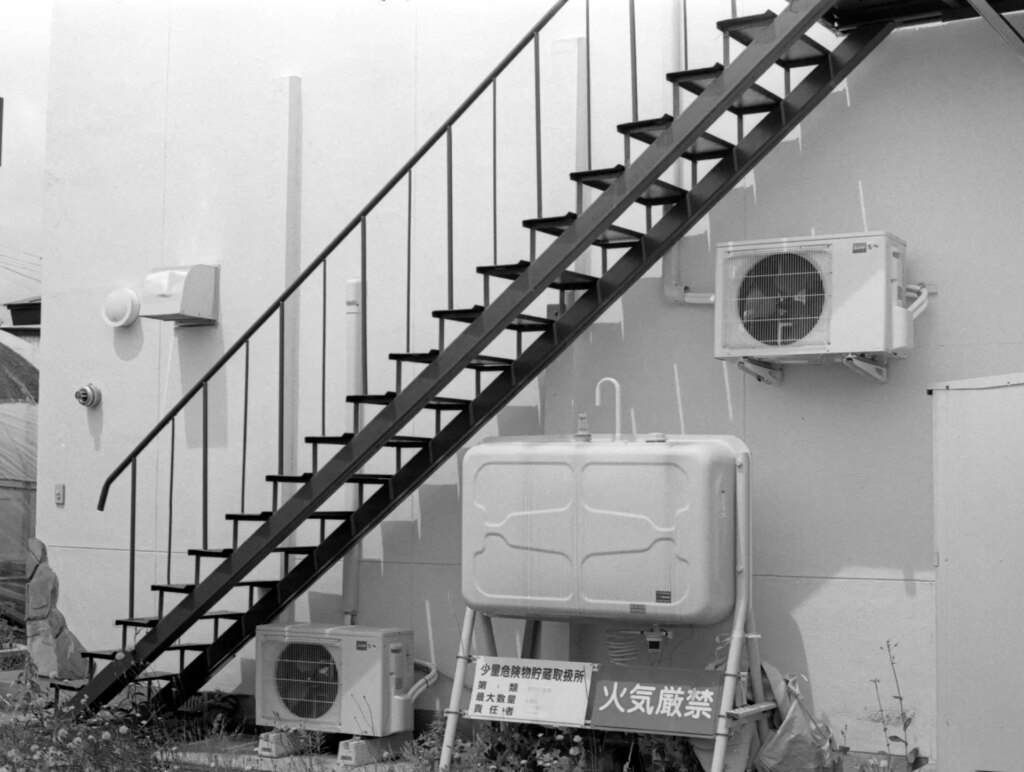
In the second example some difference was visible in the shadow area near the automatic door closer was detected but again possibly down factors other than the film.
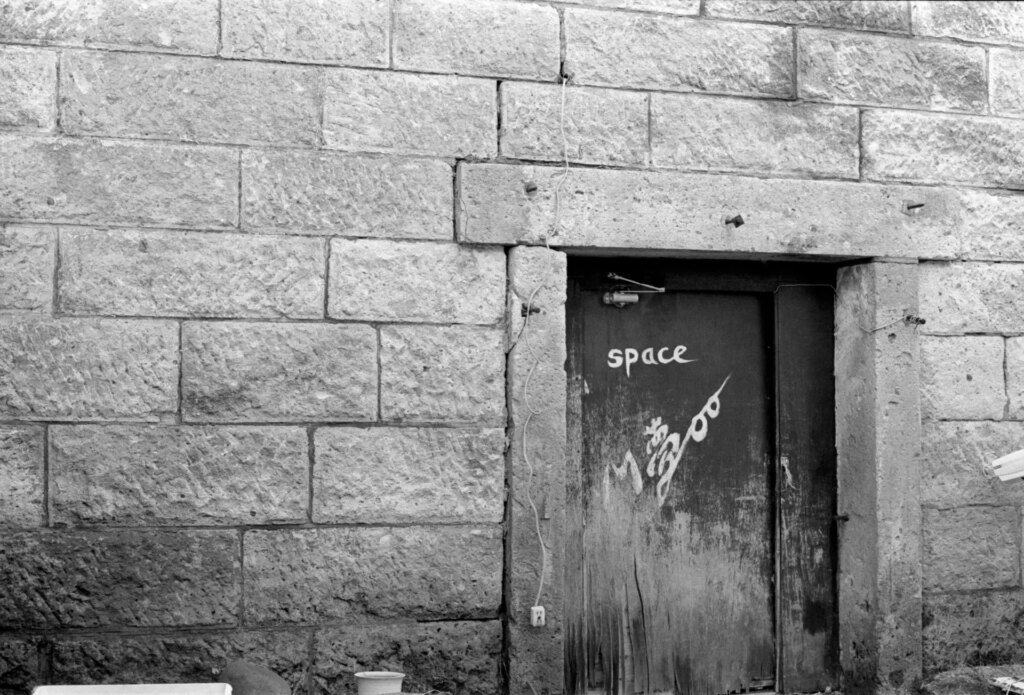
I used a hand-held incident light meter when taking images taken with the M3B instead of the MP. The third image showed a difference in the shadow area below the steering wheel but slight contrast curve adjustment brought the two images back to being virtually identical.
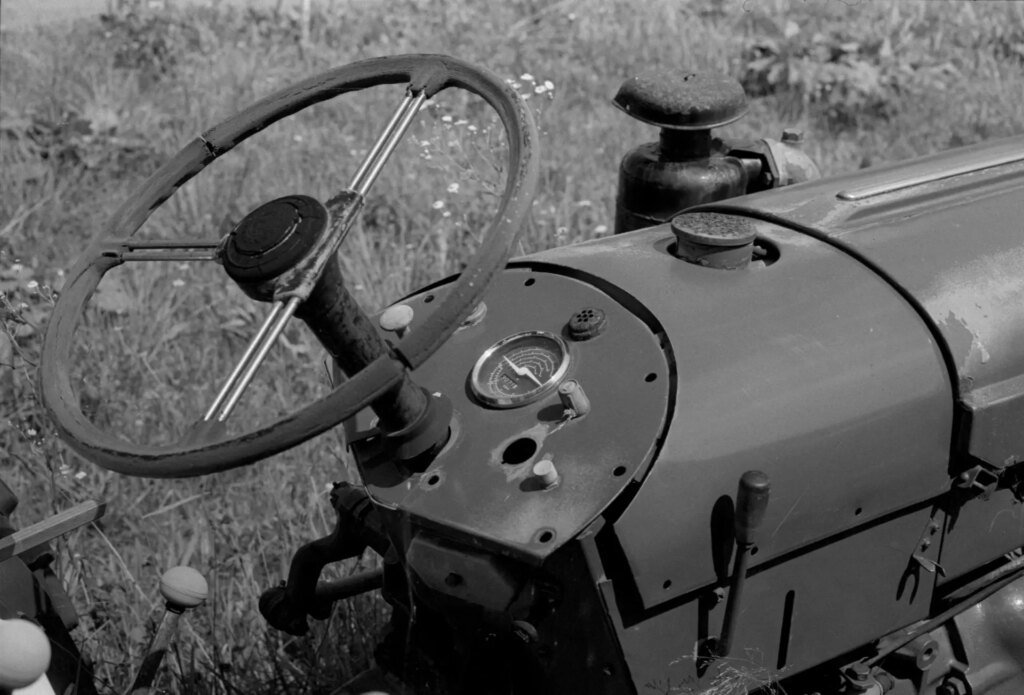
In short, for correctly exposed and identically developed images I could find no material discernible difference between the two films. So at this point I decided to stop the side by side comparison and use the currently available film (RPX100) to take some more images – for that reason the above images are all Silvermax, what follows is on RPX100.
The first image below was taken inside a shopping complex with a relatively dark escalator and bright floors with light reflections. Again this is a straight scan. Minor adjustment of the contrast curve made the reflections of the lights ‘pop’ and gave the most satisfying image, although the one stop overexposed version worked almost equally well. Underexposed images, even by one stop, did not yield as satisfying an image. Another test on sky and clouds showed increasing contrast in clouds made grain unacceptably apparent (for my taste).
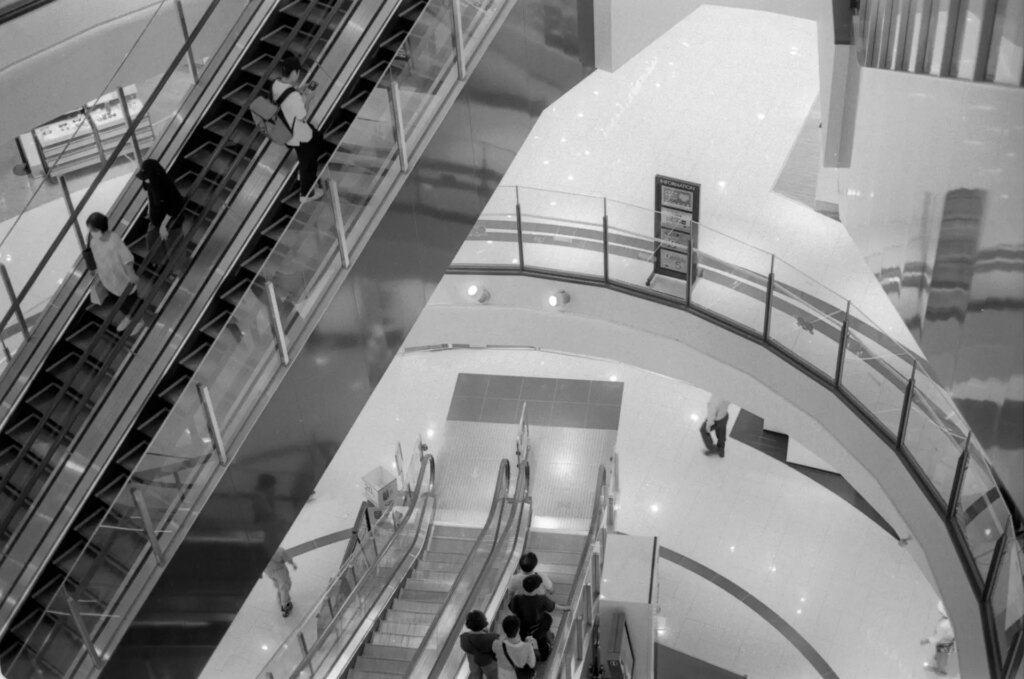
Well, so much for boring testing – lets just use it!
Walking around Asahikawa on the west side of the city, here’s a short selection of images generally with only minor contrast curve adjustment. The featured image is a dilapidated former home and business premises, probably about 70 years old built when Asahikawa was less than a third of its current population. The generally dull day is probably more responsible for the lower contrast than the film itself.
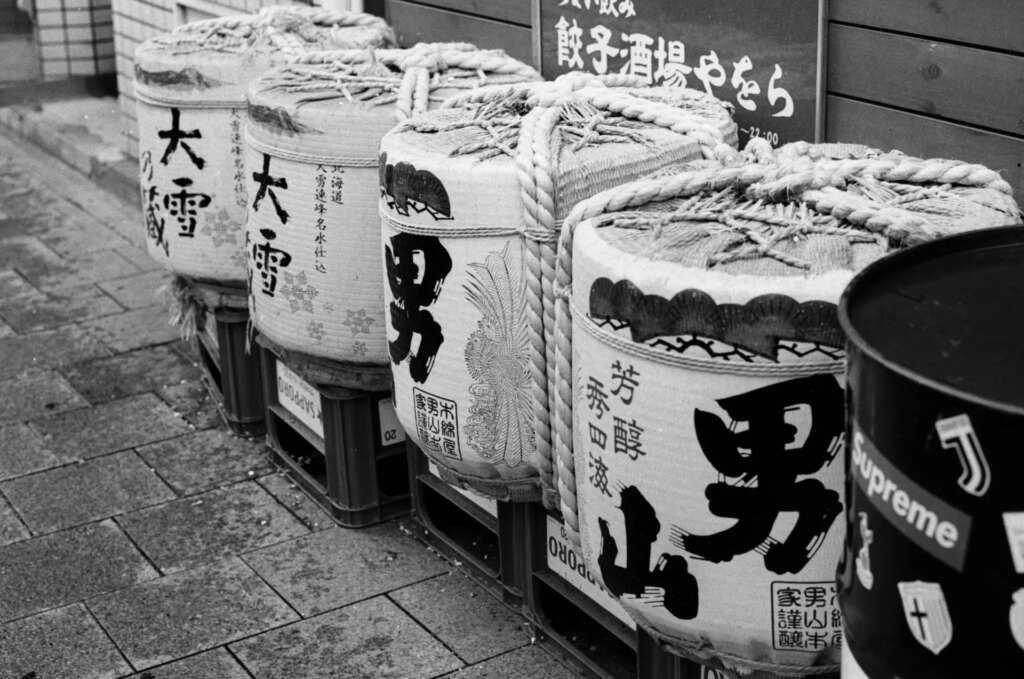
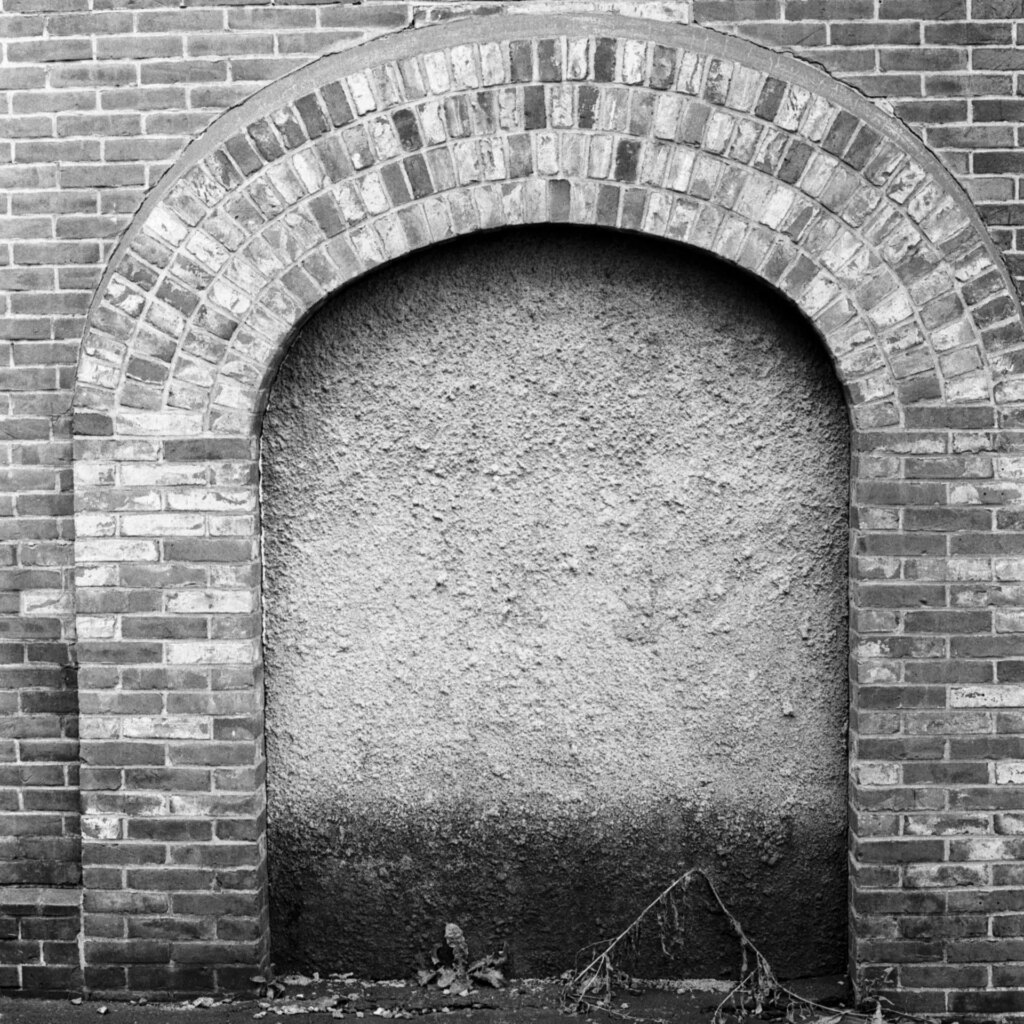
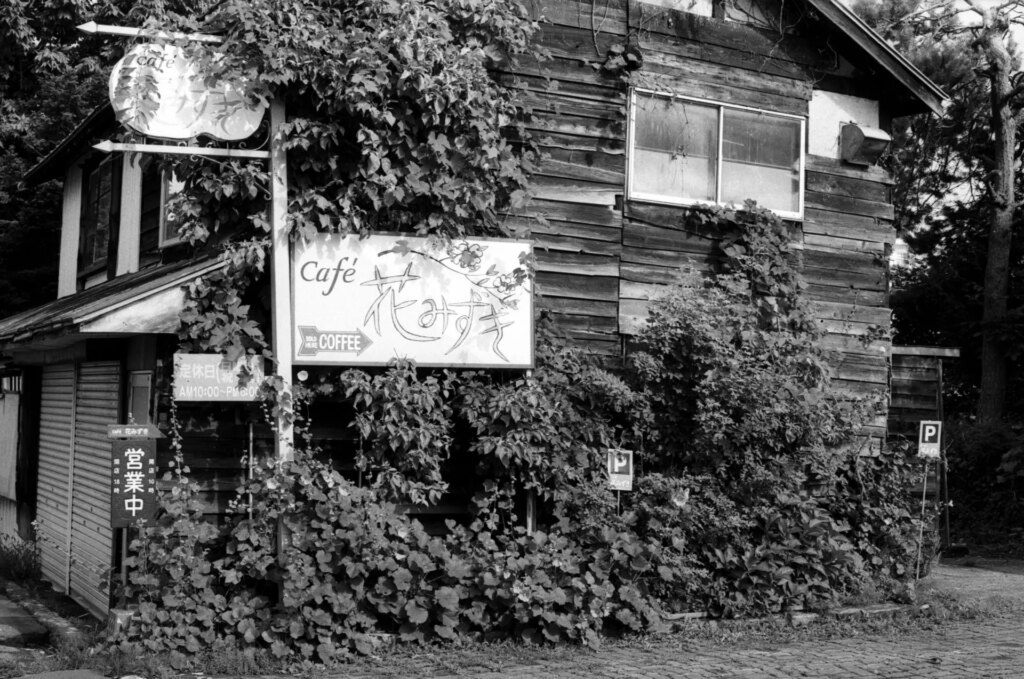
The final image below is a ¼ crop of the frame.
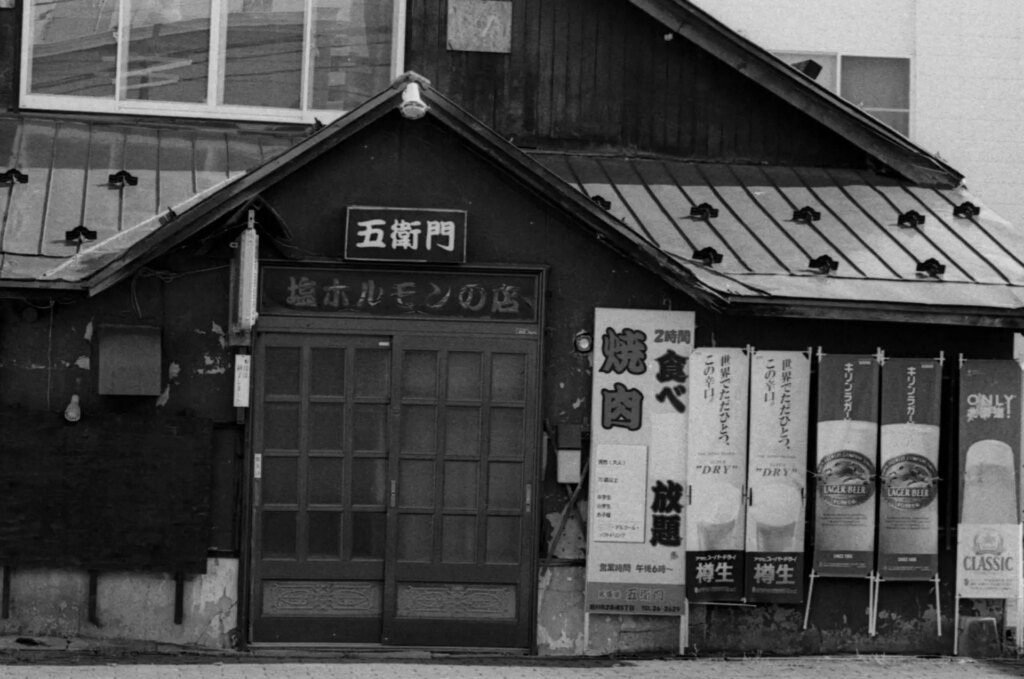
In conclusion I’d be happy to use either of these films exposing at box speed for my photography.
Share this post:
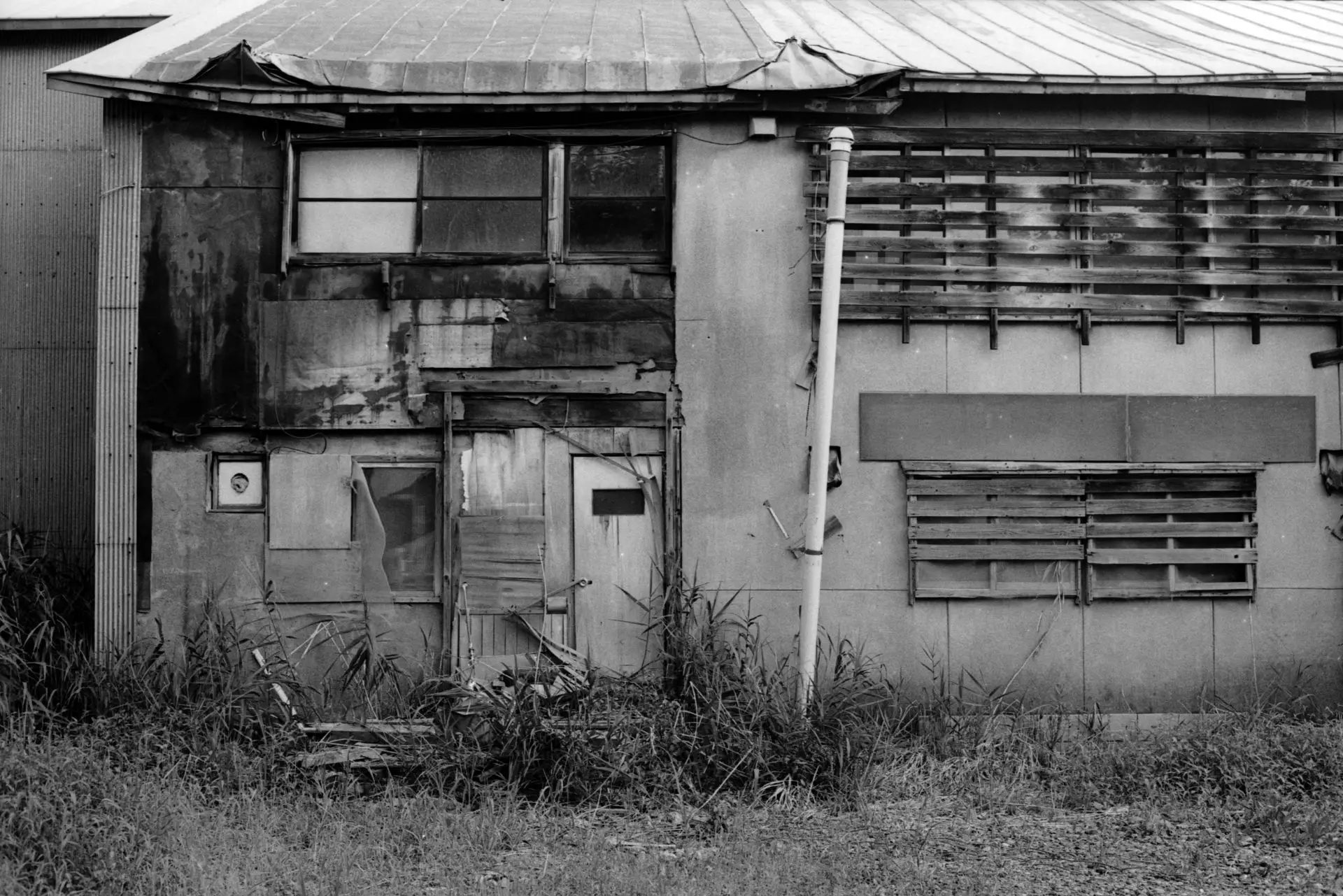








Comments
Bob Janes on Rollei RPX 100 and some comparisons to ADOX Silvermax.
Comment posted: 11/10/2023
Having said that, the results you are getting look good.
Comment posted: 11/10/2023
Julian Tanase on Rollei RPX 100 and some comparisons to ADOX Silvermax.
Comment posted: 11/10/2023
As usual, nice photographs, and interesting places and such. Thank you !
Comment posted: 11/10/2023
Bruno Chalifour on Rollei RPX 100 and some comparisons to ADOX Silvermax.
Comment posted: 11/10/2023
Comment posted: 11/10/2023
Bruno Chalifour on Rollei RPX 100 and some comparisons to ADOX Silvermax.
Comment posted: 11/10/2023
Best,
Comment posted: 11/10/2023
Piotr on Rollei RPX 100 and some comparisons to ADOX Silvermax.
Comment posted: 11/10/2023
Comment posted: 11/10/2023